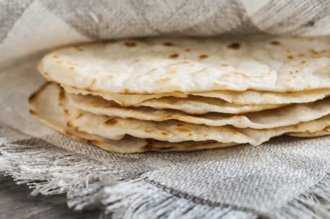
~ Breaking of Bread Scriptures from the Book of Acts ~ Acts 2:42 Keeping the proper doctrine that was taught by the elders was extremely important in the early congregation. Act 2:46 And continuing steadfastly with one mind day by day in the sanctuary†, and breaking bread from house to house,
Act 20:11 And going up, and breaking bread†, and tasting, and he continued to speak until daybreak, and then he departed on his journey by land . ~ Acts 20:11 Breaking bread is an ancient Semitic term that simply means eating together.
Act 27:35 And saying these things, and taking bread, he gave thanks to YAHWEH before all; and breaking, he began to eat.
Other New Testament Scriptures
Luk 24:35 And they related the things in the highway, and how He was known to them in the breaking of the bread.
1Co 5:11 But now I wrote to you not to associate intimately; if anyone is called a brother and is either immoral, or a covetous one, or an idolater, or a reviler, or a drunkard, or a extortionist, with such a one do not even break bread† to eat with. ~ 1 Corinthians 5:11 An ancient Middle Eastern term used simply for eating together with. Referring to Passover (Lord's Supper) ~ 1 Corinthians 10:16 In Jewish transition from the time of Messiah 4 cups were drank at Passover each having a special meaning. 1Co 10:21 you cannot drink the cup of our Master and a cup of demons; you cannot partake of the table of our Master, and a table of demons†. ~ 1 Corinthians 10:21 It is unacceptable to YHWH to enter covenant relationship with Him (Baptism in His name only, and Passover) and to continue with pagan practices such as Christmas and Easter. Christmas is a pagan ceremony coming from the worship of the winter solstice and “Easter” is the name of the Babylonian goddess 'Istar' and is steeped in paganism.
Breaking of Bread the Jewish Understanding. In the days of Yahshua, a 'communal meal' was a common practice, particularly among the Jewish Sect of the Essenes. The Essenes, a community living mostly in the Judean hills, were known for their absolute community of goods. Those who came into the Community, had to give all they had: there was one purse for all, and all members had expenses, clothing, and food in common. In the second chapter of the book of 'Acts', many of the believers in Messiah began to follow the Essene lifestyle, selling their belongings, having all things in common and breaking bread (sharing communal meals) from house to house: "And all believers were together and had all things in common; and those who had possessions sold them and divided to each man according to his need. And they went to the Temple every day with one accord; and at home they broke bread and received food with joy and a pure heart." 1 With the advent of Christianity in the fourth century CE, a "Communion" ritual was introduced as part of Christian worship. This ritual involved the reconstructing of the 'sacrifice of Christ', where the worshipers partook of bread and wine, which represented the body and blood of their god. Now, within Judaism, there is no such concept as 'communion', nor has there ever been. There is no Biblical equivalent to 'Eucharist', or 'Communion ritual'. Actual, the 'communion' practice caused many severe problems for the Jews, particularly in medieval times with the strange charges of 'host desecration'. Jews were accused and executed, for allegedly profaning the communion wafer. It was imagined in Christian circles that the Jews, not content with crucifying Christ once, continued to renew the agonies of his suffering by stabbing, tormenting or burning the host. It was said that such was the intensity of their hatred, that when the host shed blood, emitted voices or took to flight, the Jews were not deterred. The charge of host desecration was leveled against Jews over all the Christian world, frequently bringing large scale massacre. So, if the concept of 'communion' has no Jewish root, where did the Church's ritual originate? In the second century CE, the Roman Church officially rejected all Jewish custom and Law, stating that Christianity had nothing in common with the Jews. In order to accommodate pagans into the new Roman Empire religion, the practices and rituals of the Mystery Religions were modified to suit Christianity. Let us take a look at the origins of the "Communion Ritual" in the Mystery Religions of Babylon and Greece: The Ritual of Communion was a ritual called 'Omophagia'. In the Greek mysteries, Dionysus (or Bacchus - his Babylonian counterpart), was one of the main deities. His birth was celebrated on December 25. He was the god of wine. His followers, called "Bacchants" , celebrated the communion ritual of Dionysus by crushing the fruit of the vine and drinking the scarlet lifeblood pressed from its flesh. They also dismembering the animal which represented Dionysus (the bull), and worshipers would tear the bull to pieces with their hands and teeth. By practicing "Omophagia" (the dismemberment of the sacrificial victim and eating the flesh and drinking the blood), it was believed the worshiper absorbed the nature, or life of the god into his own. Thus, having consumed the flesh of the bull and the wine representing Dionysus, the worshipers took on his power and character. This was a communion in the god's own body and blood - to become like the god, they had to consume the god. The second century Church took this concept and adapted it to 'Jesus'. For this reason, the miracle of communion was that the symbols of 'Jesus', the bread and wine, were believed to literally become his flesh and blood. This is called "transubstantiation", and is a belief of Catholics to this day. Although the Protestant Church rejected 'transubstantiation', they kept the communion ritual, declaring that in the bread and wine, the believer partakes spiritually in the flesh and blood of the god. There are three main doctrines of the Communion rite within Christianity: 1. The Roman Catholic Church teaches that the wafer and wine of the Sacrament become the actual flesh and blood of Christ (Transubstantiation). 2. The Lutheran Church teaches that the flesh and blood of Christ are consumed in and with the bread and wine. This doctrine is called Consubstantiation. 3. The Calvinists say that the bread and wine give those who partake of them a spiritual participation of the flesh and blood of Christ. It has been a common practice of non-Catholic denominations to simply 'spiritualize' Catholic doctrines. However, the belief still remains, that by either literally or spiritually partaking in the body and blood of the 'god', the believer receives the very life of the god. In the Jewish faith, there is no ritual where a worshiper literally eats a symbol of God in order to 'receive Him'. We are transformed only by the Ruach (Spirit of God) in the observance of the Commandments. If this is the case, then what did Yahshua mean when he used the symbolism of bread and wine and flesh and blood in reference to himself? "And he took bread and gave thanks and broke it, and gave it to them and said, Most of us know, that at this time Yahshua was having a Passover Seder with his disciples. What piece of bread did he take, describing it as "my body"? Most often, at a 'Communion service', leavened bread is used. Leaven represents sin; Messiah is 'the sinless one'. It is the anti-messiah who is called the 'man of sin'.
Old Testament Jer 16:7 Nor shall anyone break bread† for them in mourning, to comfort him for ones who died. Nor shall they give them the cup of comfort to drink for one's father or one's mother†. Lam 4:4 The tongue of the nursling cleaves to his palate in thirst. The young children ask bread, but there is no breaking for them. At the beginning of the family meal, this blessing is said as the bread is broken. "Baruch ata Adonai, Eloheinu Melech ha'olam,
hamotzi lechem, min ha aretz." |
|
ברוך אתה יי אלוהינו מלך העולם Blessed are You O YAHWEH our ELOHIM, King of the Universe |

|


